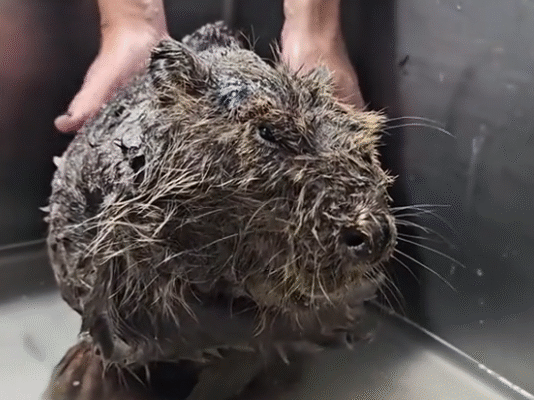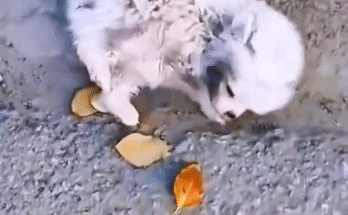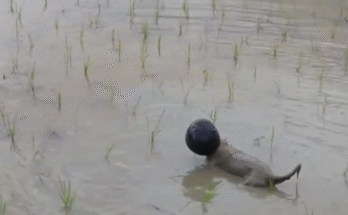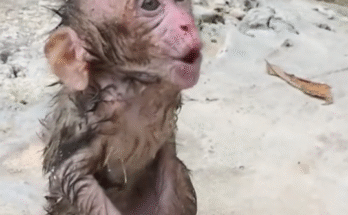It was a misty spring morning in the quiet town of Oakridge. Dew clung to every blade of grass, and the air carried the rich scent of blooming wildflowers. The world was slowly waking up, but for Thomas Gray, a retired forest ranger, mornings like this were the perfect time for a peaceful walk in the woods. He carried a steaming thermos of coffee, a pair of binoculars slung around his neck, and a well-worn field guide tucked into his backpack.
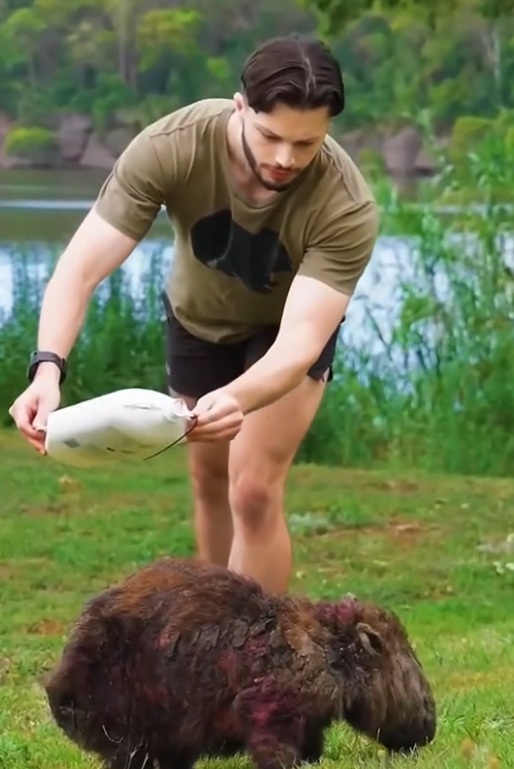
As he wandered along the trail near Willow Creek, a faint rustling caught his attention. Thomas paused. The sound wasn’t like the skitter of a squirrel or the chirp of a bird—it was slower, labored. He turned off the path and gently pushed aside a thicket of ferns. There, lying on its side, was a groundhog.
Its brown fur was matted and patchy, and its breathing was shallow and uneven. Its eyes blinked slowly, heavy with fatigue. One paw twitched slightly, as if trying to stand but lacking the strength. Thomas knelt beside it, his heart sinking. He had seen many wild animals in his life, but something about this groundhog struck a chord deep within him.
“This little guy’s not doing well,” he murmured.
Years of experience taught him not to touch wild animals recklessly. But he also knew when one was in desperate need of help. He removed his jacket and gently wrapped the groundhog in it, cradling the fragile body carefully. He could feel its heartbeat—a rapid, unsteady flutter.
Thomas carried it home and placed it in a box lined with old towels in his sunroom. He offered it water through a dropper and called Dr. Emily Ward, the local wildlife veterinarian. Within an hour, she arrived with her medical kit.
“He’s severely dehydrated and possibly suffering from poisoning or an infection,” she said after examining the groundhog. “It’s a good thing you found him when you did.”
Emily gave the animal fluids and antibiotics. Thomas stayed beside it, watching and waiting. He gave the groundhog a temporary name—Whistle—after the high-pitched whistle groundhogs make when startled. It was meant to be temporary, but the name stuck.
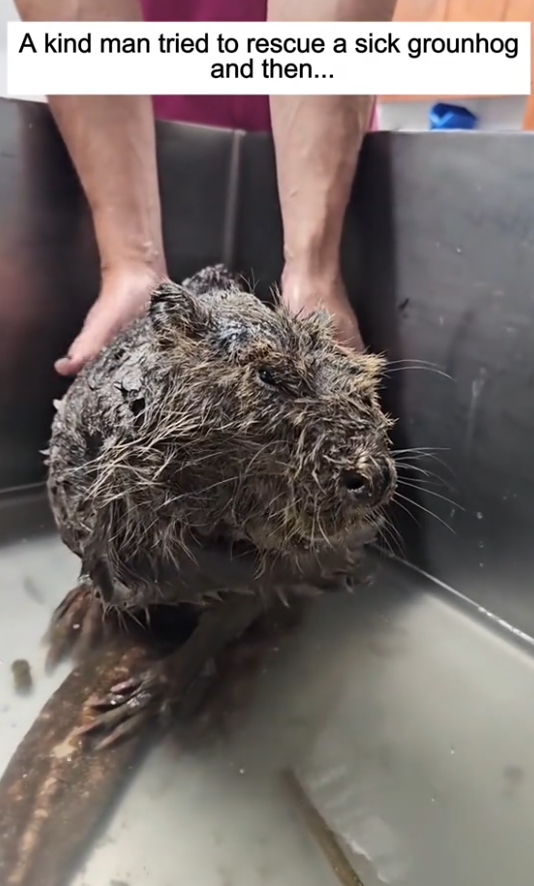
Over the next few days, Thomas and Emily worked together to nurse Whistle back to health. Slowly, the animal began to improve. He started to eat small bits of fruit, his fur regained a bit of its shine, and his eyes became more alert. Thomas, who had spent most of his life observing wildlife from a respectful distance, found himself forming a quiet bond with this little creature.
Neighbors began hearing about Thomas’s unexpected houseguest. They’d stop by with questions or food for Whistle, some offering skeptical smiles, others genuine support. The story spread through the town, and people became emotionally invested in Whistle’s recovery.
But just as Whistle seemed to be getting better, something strange began to happen.
One evening, as Thomas sat beside Whistle’s box reading a book, the groundhog began making odd noises. Not just the usual chittering or soft squeaks—these were rhythmic, almost melodic. Thomas looked up, puzzled. Whistle’s eyes locked with his, and in that moment, Thomas felt an eerie sensation—like the groundhog was trying to communicate something more.
The next day, Thomas woke to find Whistle no longer in the box. Panicked, he searched the house until he found the groundhog sitting in the middle of the garden, gazing at the woods.
“Are you trying to tell me something?” Thomas asked aloud, chuckling at himself.
Whistle chirped, then scampered toward the trees, pausing to glance back. Against better judgment—but driven by curiosity—Thomas followed.
Whistle led him deeper into the forest, along a path Thomas didn’t recognize, until they reached a rocky outcrop overlooking a ravine. There, lying near a patch of nettles, were two more groundhogs. One was breathing heavily; the other didn’t move at all.
Thomas knelt and realized the live one was likely Whistle’s mate. The dead one—a young pup—had passed recently. He felt a deep sadness sweep over him.
“They needed help, too,” he whispered, realizing Whistle hadn’t wandered off—he had led Thomas here.
Thomas carried the sick groundhog back to his home, this time with Whistle trailing beside him. Emily came again and confirmed the female had the same symptoms Whistle had when Thomas first found him—likely from contaminated water or pesticide exposure.
It became clear that the nearby farmland was poisoning local wildlife, and this discovery led Thomas and Emily to take action. They contacted environmental agencies, collected water samples, and held town meetings. The community, rallied by Whistle’s story, pushed for stricter regulations on chemical use near natural habitats.
As for Whistle, he fully recovered and became somewhat of a local celebrity. Schools invited Thomas and Emily to speak about wildlife care and environmental protection. Children drew pictures of Whistle and wrote letters thanking Thomas for his kindness.
Eventually, Whistle and his mate—now named Willow—were healthy enough to return to the wild. On the day of their release, a small crowd gathered at Willow Creek. Thomas opened the carrier, and Whistle stepped out slowly, sniffed the air, and looked back once before darting into the underbrush with Willow close behind.
Thomas stood watching long after they disappeared.
“Goodbye, little friend,” he said softly.
Weeks passed, then months. Thomas continued his walks through the forest, but now with a deeper sense of connection. He often thought of Whistle and what the groundhog had shown him—not just the importance of compassion, but how even the smallest creature could lead to something far greater.
Then one bright morning, as he sat on his porch sipping coffee, he heard a familiar whistle. He looked up and saw a chubby brown figure waddling toward him from the trees, a few tiny pups in tow.
Whistle had returned—this time, not in need of rescue, but perhaps to say thank you.
And Thomas, heart full, welcomed his old friend home.
